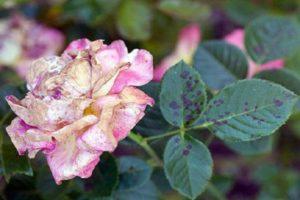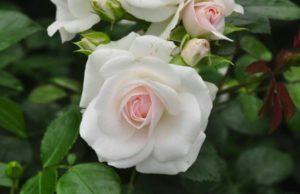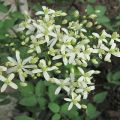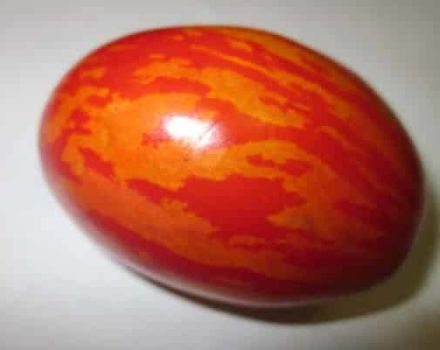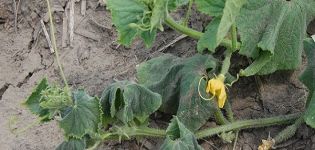Description and characteristics of climbing roses of the Parade variety, growing rules
Parade rose has excellent decorative characteristics and is often used in landscape design. For a culture to grow and develop normally, it must be fully looked after. To do this, the plant should be watered, cut, and fed on time. It is recommended to cover the bushes for the winter. Protection against diseases and pests is also important.
Description and types of varieties of roses Parade
The beautiful climbing rose Parade belongs to the claiming category and is considered a large-flowered plant. This culture is unpretentious to care for and easily adapts to any conditions. It is characterized by abundant and lush flowering.
The culture is capable of reaching a height of 4 meters. Its width is 2 meters. For a plant to develop normally, it needs fixation to a support. The shoots of this variety are light and flexible, but under the weight of the flowers they can lean to the ground. If the branches are not tied, they will break.
These roses are characterized by dark green leaves that are close to each other. The flowers are lush and oval in shape. They reach 10 centimeters in diameter. Each flower contains 30 petals. 5 inflorescences usually appear on 1 branch. By the end of flowering, they acquire an almost ruby color.
Although the plant is considered to be quite gentle, it is resistant to rainfall. Soft and flexible stems result in water draining from them and hardly damaging the crop. The buds come in a variety of shades, from hot pink to cherry red.
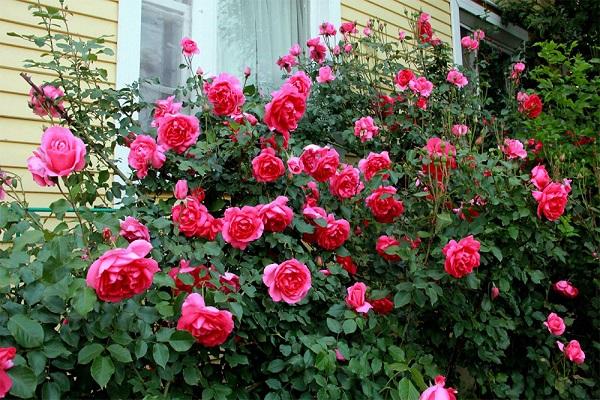
Main advantages and disadvantages
The main advantage of the variety is considered to be long and lush flowering. It repeats several times during the season. The undoubted advantage of culture is its resistance to disease. The main disadvantage of the plant is its susceptibility to excess moisture.
The specifics of growing crops in the garden
To achieve success in growing roses of this variety, it is worth planting correctly.
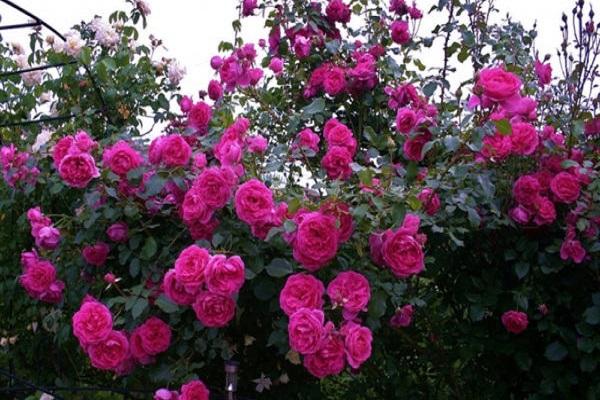
When to plant?
It is best to plant the crop in late spring or early summer. Thanks to this, the plant will have time to grow and get stronger by the arrival of winter.
Site selection and soil preparation
It is permissible to plant Parade roses in shady places. However, it will be possible to achieve lush and abundant flowering only in sunny areas.It is important to choose a location with good air circulation. When planted in a sunny location, rainwater evaporates faster from foliage. This helps to minimize the risk of fungal infections.
The culture is not too demanding on the composition of the soil. It can grow and develop on any soil. However, a loose and nutritious soil will be the best option. High-quality drainage is also important.
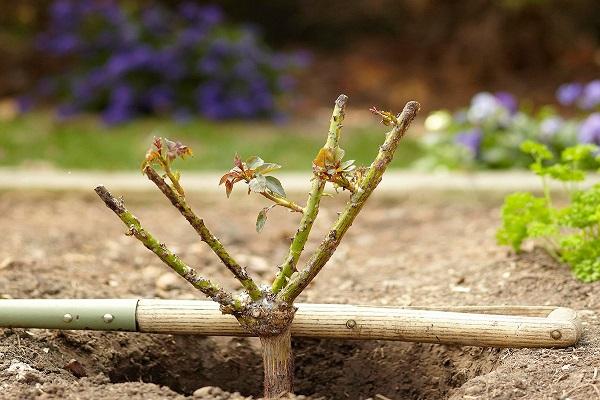
To prepare the ground, it is worth making a strip 50 centimeters wide and digging it deeply. Then, for each plant, dig a hole the size of the root system and apply organic fertilizer to it. For this, manure or compost is used.
Preparation of planting material
To soak the planting material, it is worth making a Kornevin solution. Other growth promoters are also suitable. It is worth immersing the seedling into the resulting depression for half an hour.
Landing technology
When carrying out planting work, the culture must be immersed in a depression, sprinkled with soil and compacted its surfaces. It is worth completing the planting with abundant watering. In this case, the shoots of the rose are recommended to be shortened. For abundant flowering, their size should be 15 centimeters.
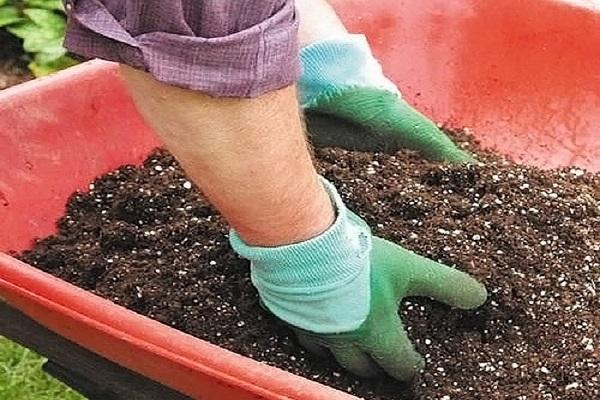
Features of variety care
This variety of climbing rose is considered very unpretentious to care for. To achieve lush flowering, it is worth watering and feeding the bushes on time.
Watering
The soil is moistened every 10 days. Watering should be abundant enough to allow moisture to reach the deepest roots. Otherwise, root formation will occur on the surface. It is difficult for such a plant to survive the winter.
Top dressing
It is recommended to feed the crop 3 years after planting. For this, liquid organic fertilizers and ash are used. It is recommended to use 1 glass of ash and 1 liter of liquid manure per bucket of water. From ready-made products, you can choose Novovert for roses. In the fall, it is worth adding a solution of potassium salt.
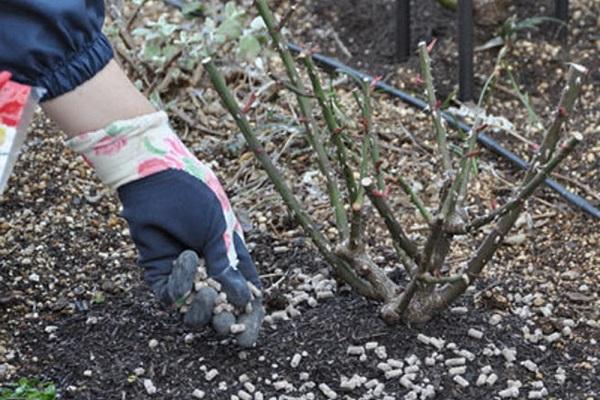
Trimming and shaping
Pruning the rose is recommended in spring and autumn. During the procedure, it is worth getting rid of diseased and affected branches. You should also remove shoots 3-4 years old. They will not bloom. The rest of the branches should be cut to the first strong bud.
Shelter for the winter
It is recommended to prepare the plant for winter at the end of September. To do this, you should do the following:
- clear branches from foliage;
- perform trimming;
- bend and attach the branches to the ground;
- sprinkle a rose - the height of the hill should be 30 centimeters;
- cover the bush with dry leaves and branches - it is also permissible to use a special non-woven material.
With the arrival of severe cold weather, it is worth making a quality shelter. To do this, the rose can be covered with a large box or a thick layer of spruce branches can be thrown over the bush.
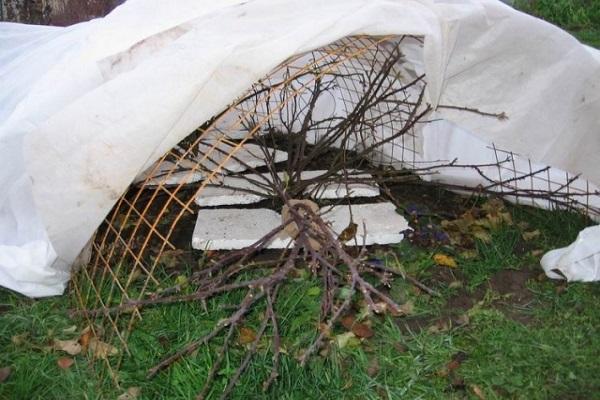
Protection from diseases and pests
When growing a crop in a dark place, it can face fungal infections. Although the rose is considered a moisture-loving plant, it is not recommended to plant it in areas with high groundwater levels.
The culture may interfere with the development of powdery mildew. This disease is accompanied by the appearance of white bloom on the leaves. Ash infusion, which is used to spray crops, will help to cope with the problem.
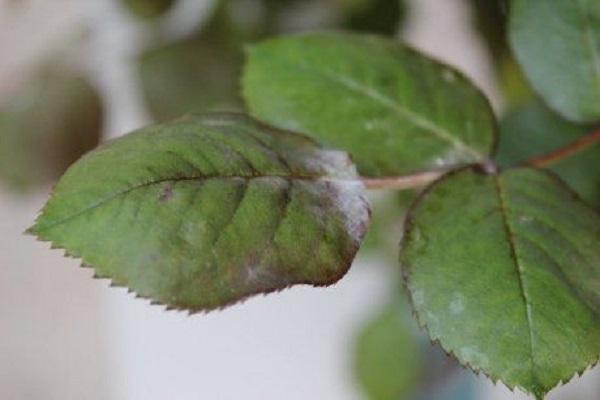
Black spot is considered another dangerous disease. It is characterized by the appearance of maroon spots on the leaves. A solution of copper sulfate will help to cope with the pathology.
Of the pests, the rose most often suffers from attacks of spider mites. Today, there are many infusions and powders on sale that deal with parasites. Another dangerous insect is the rose cicada. Means such as Fufanon and Intavir help to eliminate it.

Flower propagation
You can propagate a culture in different ways:
- seeds;
- vaccination;
- layering;
- cuttings.
The simplest and most affordable method of cultivation is considered to be cuttings.When choosing a seed method, planting material should be bought in specialized stores.

Use in landscape design
Rose Parade can be used to create a beautiful hedge. To decorate the lattice or fence, the bushes should be planted at a distance of 45 centimeters from the structure. The distance between the plants should be 1 meter. Bright buds look especially impressive against the background of white arches.
The bright pink flowers look great with conifers. If desired, the Parade rose can be grown as a bush. However, in this case, you need to regularly prune the plant.
Rose Parade is considered a popular ornamental plant that is often used in landscape design. This is an unpretentious culture that does not require specific care. To achieve lush and abundant flowering, it is recommended to water and feed the bushes on time. If symptoms of fungal infections or pest attacks appear, you should immediately use special drugs.
